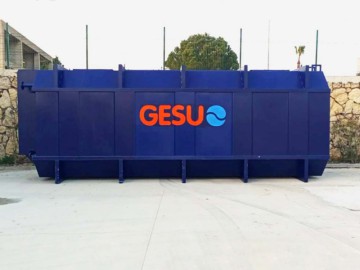MEMBRANE BIOREACTOR (MBR) SYSTEM
The membrane bioreactor (MBR) system is a treatment technology that combines the activated sludge process, which is one of the biological treatment methods, with the membrane separation process.
Conventional treatment of wastewater usually consists of a three-step process. The sedimentation of large solids present in the wastewater is followed by a second settling process for aerobic treatment of organic matter and removal of biomass, respectively. Although the MBR reactor is operated similarly to the conventional activated sludge process, there is no need for a final settling tank in this treatment technology.
The MBR system allows the hydraulic and mud retention times to be different from each other. Thus, all the sludge is kept in the MBR, ensuring that the sludge age is sufficiently long. Suspended solids escapes formed in conventional settling ponds of biomass are completely eliminated and the quality of the treated effluent is quite good. Since the effective pore size is usually less than 0.1 μm, clean and significantly disinfected effluent is produced. By concentrating the biomass more, it reduces the required tank size and increases the efficiency of the biological treatment process.
MBR systems are sized according to the flow rate of this wastewater, wastewater analysis and desired output wastewater parameters.

